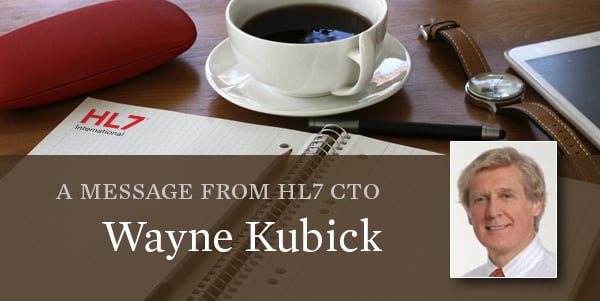
Doing Less, but Better
For many of us, this desperate pandemic year has led to plenty of introspection. This has also been true for the HL7 Board, which has been contemplating the future of the HL7 organization after emerging from the current crisis. Among a set of core principles adopted by the Board are agility and focus. To be agile, we need to simplify and refine the organization and core processes as well as provide support with continued improvements to our tooling. This also requires getting our global community to better understand and use the processes more consistently and effectively, so we can better focus on our core work of developing and implementing interoperability standards. This a perfect segue back toward my long-held core belief in essentialism.
Back to Basics
I first espoused the concept of essentialism to an enthusiastic Board and Technical Steering Committee back in 2016. While we’ve only made small incremental progress in the four years since, it has been guiding our process improvement and tooling initiatives. Essentialism was a driving force behind our adoption of Confluence and JIRA as well as efforts to simplify our product portfolio. Of course, we operate in a complex field, and there were many confounding forces acting at the same time. The HL7 community is more adept at introducing new processes, tools and content than at retiring or eliminating the old stuff. Thus, our commitment to essentialism faded over time, tempered by inertia and continuing demands, not the least of which has been the black swan events of 2020.
Perhaps it’s time to once again review the key elements of essentialism and discuss how it fits with our ongoing tooling strategy and plans.
Essentialism at HL7
To paraphrase author Greg McKeon, Essentialism can be summed up as the disciplined pursuit of less by learning to discern what really matters most and eliminating everything else. Among its principles are:
- A commitment to simplicity and clarity in thought and actions
- Prioritization and choice: If it isn’t a clear “hell, yes!” – then it must be a clear “no” – there is no in-between. We must recognize that we can do anything but not everything, so we must be ready to aggressively purge whatever impedes the path forward
- Replacing habitual but faulty assumptions with three core truths: ‘I choose to’, ‘Only a few things really matter’, and ‘I can do anything but not everything’
All of these require a major change in our thinking and our cultural attitudes. In the words of James Clear, “Progress requires unlearning.” In order to move ahead more dramatically, HL7 needs to leave behind much of our past, even when we have invested so much sweat equity in that past. All of us must develop the courage to, as Stephen King once said, “Kill your darlings.” Once we have accomplished that, we can focus on the essential few, instead of struggling to hack our way through the many trivial items that distract even the most wizened of HL7 veterans – while perplexing and frustrating many others who we’d like to get more engaged in our community.
HL7 Tooling Update
Now that we’ve reviewed the basics of essentialism, we can return to the core topic of HL7 tooling. While we have continued advancing multiple tooling initiatives since my last tooling update (http://blog.hl7.org/hyl7_tooling_update_spring_2020), 2020 has been largely dedicated to completing the transition to major programs like Unified Terminology Governance (UTG) rather than introducing many additional new initiatives. In addition, we have transitioned to Zoom as our primary web meeting environment, completed migrating content to Confluence, and introduced incremental improvements like a new document storage system integrated with Confluence. We have also made significant improvements to the FHIR IG publisher, expanding its scope as our backbone publishing tool to support UTG and the Consolidated Clinical Document Architecture (C-CDA). Furthermore, we’re on the verge of releasing a new FHIR Registry update that will greatly increase our ability to search and reuse implementation guides, resources, profiles and extensions. Since new features and capabilities are being rolled out almost every month, it’s much more practical to rely on the regular tooling and process updates posted at the CTO Tooling Update page in Confluence.
As I indicated in my last update, 2020 is our time for JIRA. Our timing has slipped a bit, but we’re now close to completing the transition to JIRA for tracking and to replace the old STU Comment website page. Our plans to use JIRA as the standard platform for recording and resolving ballot comments and liberating us from the tyranny of spreadsheets has also slipped and is now scheduled for piloting in the January cycle. Nevertheless, we’re determined to roll out the new JIRA-based workflow this summer, followed by workflow-enabling the other forms that drive our standards processes.
Moving Together as One
Another James Clear precept is “Living with a bias toward action,” which we will continue to acknowledge by moving ahead, recognizing we’ll have some indigestion along the way before fully emerging as a healthier, more focused and agile HL7.
A commitment to essentialism, to eliminating the trivial many in search of the vital few, is not a concession to indolence, but a conscious recognition that we can only do the right things correctly by focusing on the vital few and aggressively eliminating the rest. Adding new tooling won’t make a difference unless we can focus on doing the right things with agility. For the HL7 community, this includes:
- Continuing to refine Confluence as the single, essential source of truth and learning and not just using it as a storage closet
- Aggressively retiring or archiving outdated, conflicting, or distracting information on our website and wikis that confounds understanding of essential processes with clutter
- Incorporating visuals to emphasize the most essential key points, along with hyperlinked drill downs to the details
- Introducing new, quick, training capabilities to help membership understand those essentials, based on short summaries, tip sheets and five-minute webinars
- Asking the community – and especially those in leadership positions – to take a bit of time to review those essentials, commit to them, attest to having read them, and trying to forget much of the rest
For HL7 International to adapt to a brave new future, a commitment to essentialism will be fundamental to the success of our retooling and processing programs – and toward achieving our critically important vision of “A world in which everyone can securely access and use the right health data when and where they need it.”
In a troubling uncertain world that needs HL7 more than ever, now is the time for us to take these steps forward together.


